Do Exosomes, Liposomes, and All Extracellular Vesicles Naturally Have SNARE Proteins?
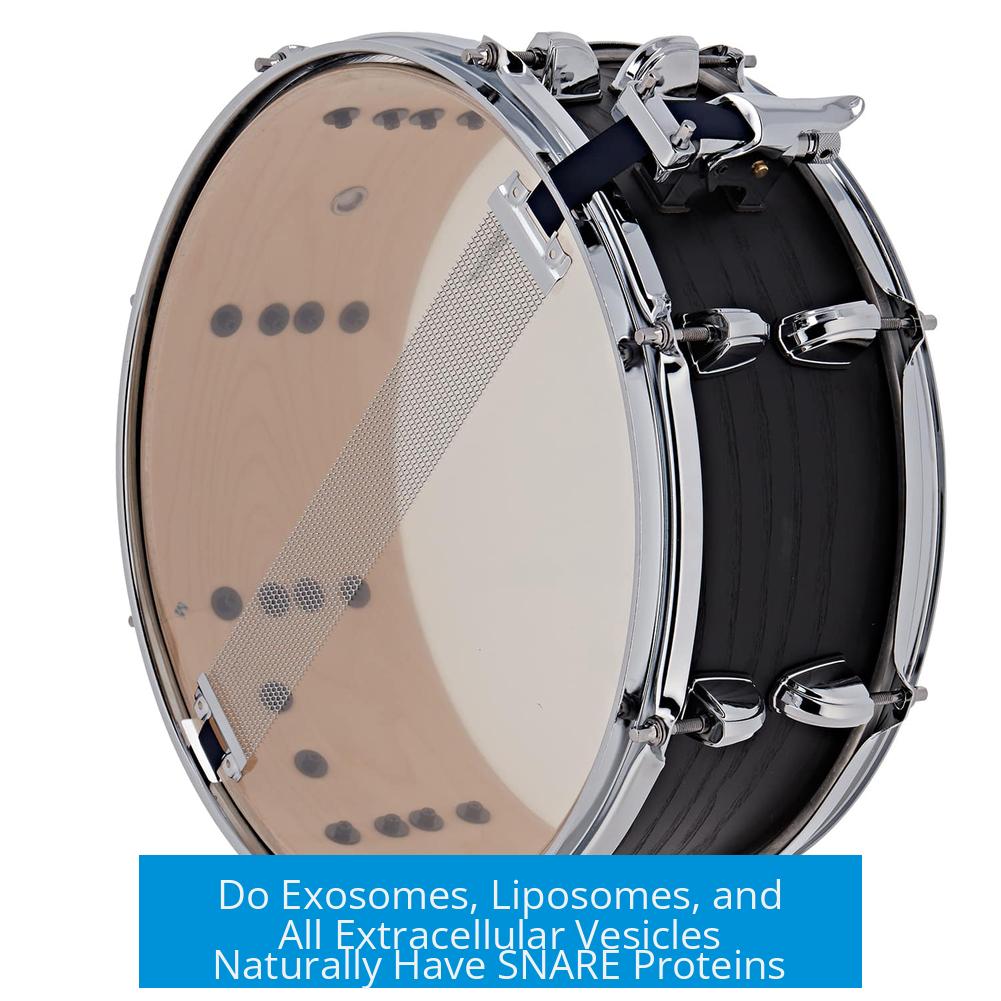
Exosomes and extracellular vesicles (EVs) are believed to generally contain SNARE proteins, but evidence remains incomplete, and not all subpopulations have been fully characterized to confirm universal presence. Liposomes, however, are synthetic and do not naturally contain SNARE proteins unless they are intentionally engineered to include them.
Understanding SNARE Proteins in Extracellular Vesicles
SNARE (Soluble NSF Attachment Protein Receptor) proteins facilitate vesicle fusion with cellular membranes, a crucial step for cargo delivery. In theory, all naturally occurring EVs, including exosomes and microvesicles, possess SNARE proteins because these proteins enable membrane fusion during uptake by recipient cells.
Research points out that EV populations vary widely in their protein composition. Some subtypes may lack certain proteins, including SNAREs. This variability is due to the stochastic and concentration-dependent nature of protein incorporation into vesicles during their biogenesis. Consequently, some EVs might be released without SNARE proteins, potentially reducing their ability to fuse and deliver cargo efficiently.
Liposomes Differ from Natural EVs
Unlike biological EVs, liposomes are artificially prepared vesicles composed of lipid bilayers. They do not carry proteins naturally, including SNAREs. If liposomes are designed for targeted drug delivery and fusion enhancement, SNARE proteins or SNARE-mimicking molecules can be incorporated artificially. Thus, the presence of SNARE proteins on liposomes depends entirely on their design and purpose.
Challenges in Detecting SNARE Proteins on EVs
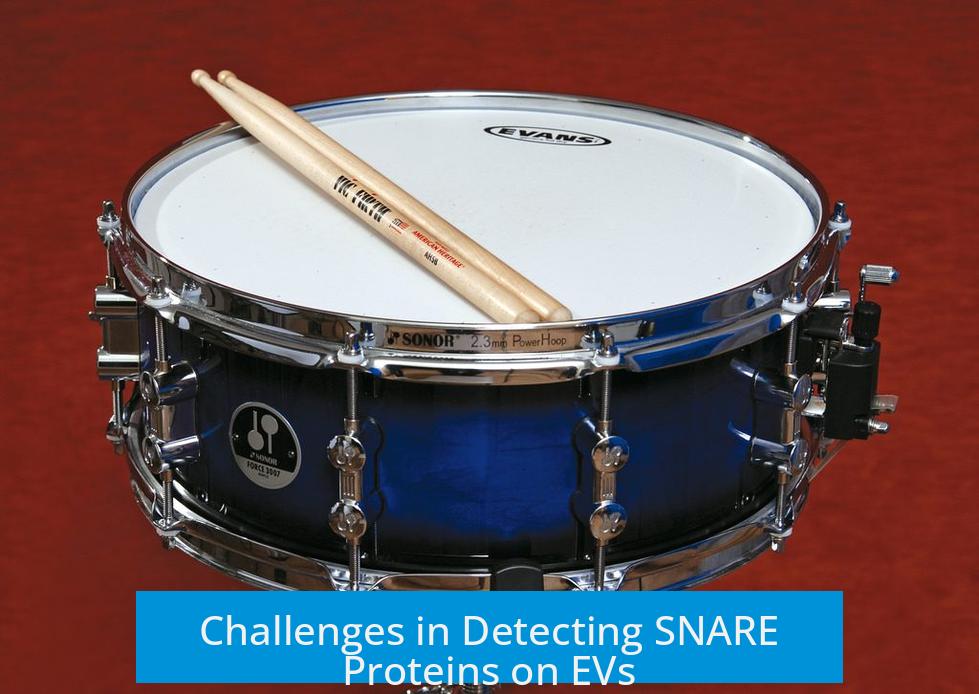
- EV heterogeneity makes it difficult to identify universal protein markers, including SNAREs.
- Current methods for tracking EVs and analyzing their membrane proteins are limited in sensitivity and resolution.
- This hampers definitive conclusions on how widespread SNARE expression is among different EV subpopulations.
EV Uptake Mechanisms and SNARE Function
EVs enter target cells via multiple pathways such as caveolin-mediated endocytosis, macropinocytosis, or membrane fusion. SNARE proteins mediate the membrane fusion process, aiding EV cargo delivery into the cytoplasm. After delivering cargo, components of EV membranes and their payloads undergo recycling within the organism. This recycling process highlights the dynamic nature of vesicle components, including SNARE proteins, in cellular communication.
Key Points
- Natural EVs like exosomes likely contain SNARE proteins, but universal presence remains unconfirmed due to EV heterogeneity.
- Some EVs may be secreted without SNAREs due to stochastic protein sorting during vesicle formation.
- Liposomes lack natural SNARE proteins unless engineered to include them.
- Technical challenges limit definitive detection and characterization of SNARE proteins on all EV subpopulations.
- SNARE proteins support EV fusion with target cells, enabling cargo delivery and membrane recycling.
Do Exosomes, Liposomes, and All Extracellular Vesicles All Naturally Have SNARE Proteins on Them?

Let’s get straight to the point: It’s theoretically assumed that all extracellular vesicles (EVs)—which include exosomes and potentially liposomes—have SNARE proteins, but the research hasn’t yet proven this across every subpopulation.
Confused? Don’t worry, you’re not alone. The world of EVs and their protein passengers, especially the infamous SNAREs, is as tricky as tracking a Wi-Fi signal in a thick castle wall.
What Are SNARE Proteins and Why Should We Care?
First, a quick primer. SNARE proteins are molecular matchmakers. They mediate fusion between membranes—like a postal worker ensuring your package (cargo) gets delivered into the right mailbox (cell). Without SNAREs, EVs can’t dock properly onto recipient cells to unload their content.
EVs—tiny bubble-like vehicles cells send out—include exosomes, microvesicles, and yes, liposomes if you’re considering synthetic or natural analogs. They play a vital role in cell communication, immune responses, and unfortunately, disease spread.
The Theoretical Assumption: SNAREs on All EVs?
One might assume that since SNAREs help vesicles fuse and deliver cargo, all EVs must have them. That’s the baseline hypothesis. But—and it’s a big but—the research is far from definitive.
Scientists have discovered that EVs come in many subpopulations, each with slightly different molecular makeups. Some subgroups might proudly wear SNARE proteins, while others might skip this accessory altogether. This is partly because we are still trying to identify reliable markers that define EV subpopulations.
The Stochastic Reality: Not Every EV Is Perfect
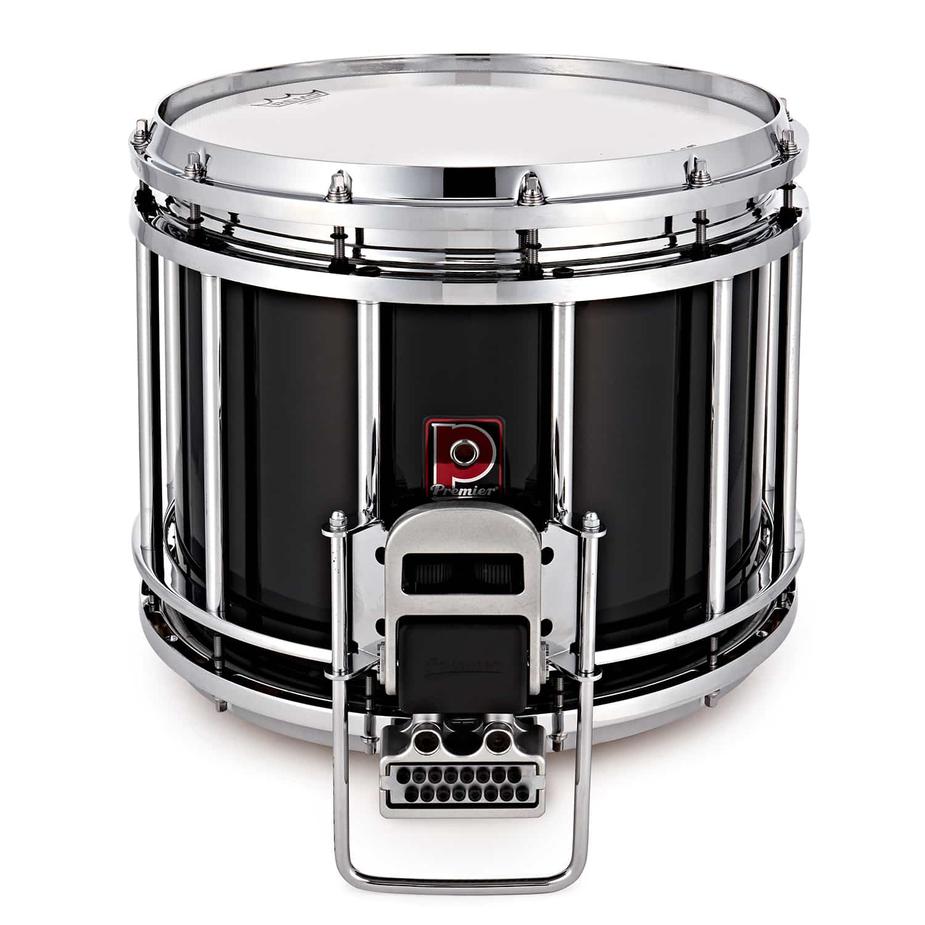
Biology is notorious for playing dice. Protein expression, loading, and secretion into EVs are concentration-dependent and stochastic. This means random variability creeps in. Some EVs probably get secreted without SNARE proteins necessary for effective “re-uptake” or fusion with target cells.
Think about it like this: If every EV were a key, not every key fits perfectly into its lock. Some might be incomplete copies or just plain duds. These “SNARE-less” vesicles might float around, unable to deliver cargo effectively. Still, even a few functional SNAREs on the surface can make a world of difference.
Challenges in Identifying SNARE Proteins on EVs
We’re still developing the right “magnifying glass” to spot SNARE proteins with certainty on all EV subpopulations. Identifying EV-specific markers, including SNARE proteins, remains an uphill battle. In vitro tracking of EVs struggles with technological limits, making it tough to observe their protein makeup in real-time.
Imagine trying to spot a camouflaged chameleon hopping between trees in a windstorm—that’s how tricky it is to track SNAREs on EVs right now.
Liposomes: The Synthetic Cousins of EVs
Now, what about liposomes? They are artificial, man-made vesicles used in drug delivery. Because they’re engineered, they don’t naturally have proteins like SNAREs unless deliberately inserted. So, liposomes and natural EVs differ in this key aspect.
In essence, liposomes on their own don’t carry SNARE proteins unless scientists engineer them to do so to mimic natural vesicle fusion. That’s like giving your delivery van a smart GPS system to find the exact address.
The Lifecycle of EV Components and SNARE Proteins

Here’s a fascinating part: EV components, including proteins and membranes, don’t just do a one-way trip. Research reveals these components get recycled inside organisms. After delivering cargo, EVs—or at least their parts—get “reloaded” and sent out again.
This ever-changing, dynamic cycle hints that even SNARE proteins are part of a complex life journey, constantly shuffled and repurposed. It’s as if the EV world runs on an intricate EV-sharing program, constantly evolving and adapting.
Multiple Routes for EV Uptake—Does SNARE Always Apply Here?
EVs don’t always use the same entrance door. Besides SNARE-mediated fusion, cells take up EVs through various methods (like caveolin-mediated entry or engulfing, aka endocytosis). This adds another layer of complexity—maybe some EVs don’t need SNAREs at all to deliver cargo.
This raises a question: Are SNARE proteins necessary for every EV’s function, or just for specific types or cargo types? It’s a topic worthy of more research.
What Does This Mean for Research and Medicine?
Thequest to identify SNARE presence on all EVs isn’t just academic curiosity. This knowledge impacts drug delivery strategies, diagnostics, and therapies. For instance, if we can pinpoint which EV subpopulations reliably carry SNAREs, we could design better nanomedicines that fuse efficiently with target cells.
Likewise, understanding EV variability might explain why some therapies using EVs show inconsistent results. It highlights the need to characterize EVs thoroughly before clinical application.
Practical Tips for Researchers and Enthusiasts

- Don’t assume all EVs have SNARE proteins—verify with up-to-date, subpopulation-specific data.
- Consider stochastic variability as a natural feature; some EVs won’t fit the “textbook” mold.
- Use multi-modal tracking and marker identification techniques to profile EV surface proteins effectively.
- Recognize liposomes as a biomimetic tool but remember they lack natural SNARE proteins without engineering.
- Appreciate the dynamic lifecycle of EVs—it’s a meaningful factor in interpretation and application.
Summing Up the SNARE Story
To answer the burning question: While it’s theoretically sound to say all natural EVs, including exosomes, possess SNARE proteins, the evidence isn’t uniform across all subpopulations. Biological randomness, technical challenges in tracking proteins, and the diverse uptake pathways all blur the picture.
Liposomes, the synthetic stand-ins, usually lack these proteins unless specifically engineered. The faint but powerful footprint of SNARE proteins hints at their critical role, but nature keeps some secrets well hidden—keeping scientists on their toes.
So next time you ponder EV mysteries, remember: The presence of SNARE proteins is a good rule of thumb but not a universal truth. The vesicle world thrives on diversity, dynamism, and a sprinkle of unpredictability.
Do all extracellular vesicles naturally have SNARE proteins on them?
In theory, all extracellular vesicles (EVs) may have SNARE proteins. However, research has not yet confirmed that every EV subpopulation contains them.
Can some EVs be secreted without SNARE proteins?
Yes. Because biological processes are stochastic and concentration-dependent, some EVs might be secreted without the proteins needed for re-uptake.
Why is it hard to confirm SNARE protein presence on EVs?
Identifying specific markers for EVs, including SNARE proteins, is challenging. Current technology limits the tracking and characterization of these proteins in vitro.
Do liposomes have SNARE proteins like exosomes?
Liposomes are artificial vesicles and do not naturally contain SNARE proteins. SNARE proteins are associated with biological extracellular vesicles such as exosomes.
How do EVs enter cells without SNARE proteins?
EVs can enter cells through various pathways like caveolin-mediated uptake or engulfing. SNARE proteins are just one element in this complex process.


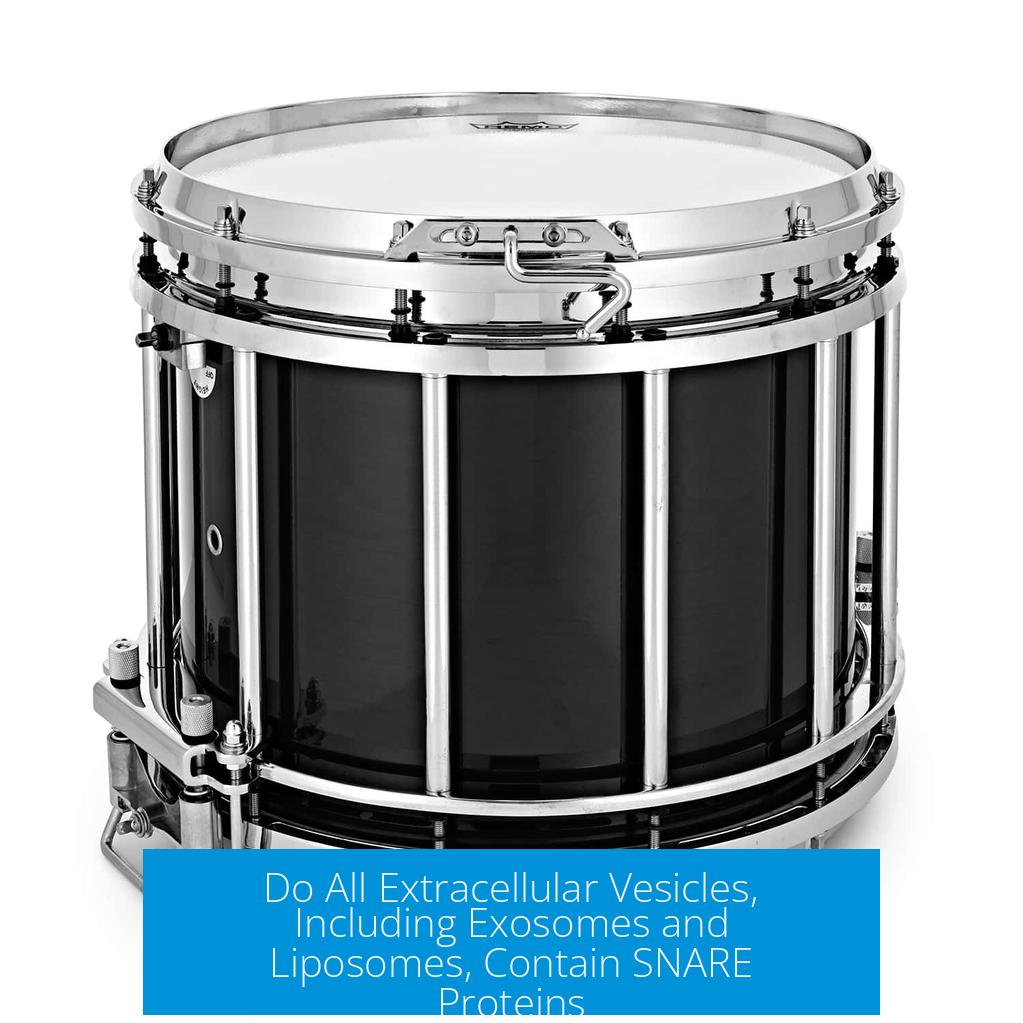
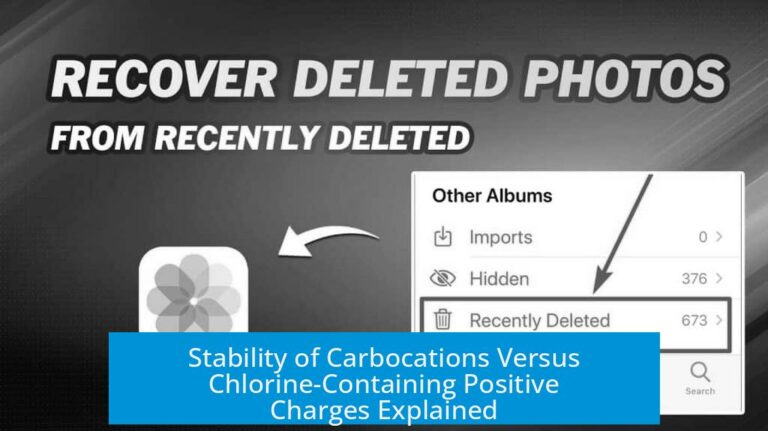

Leave a Comment